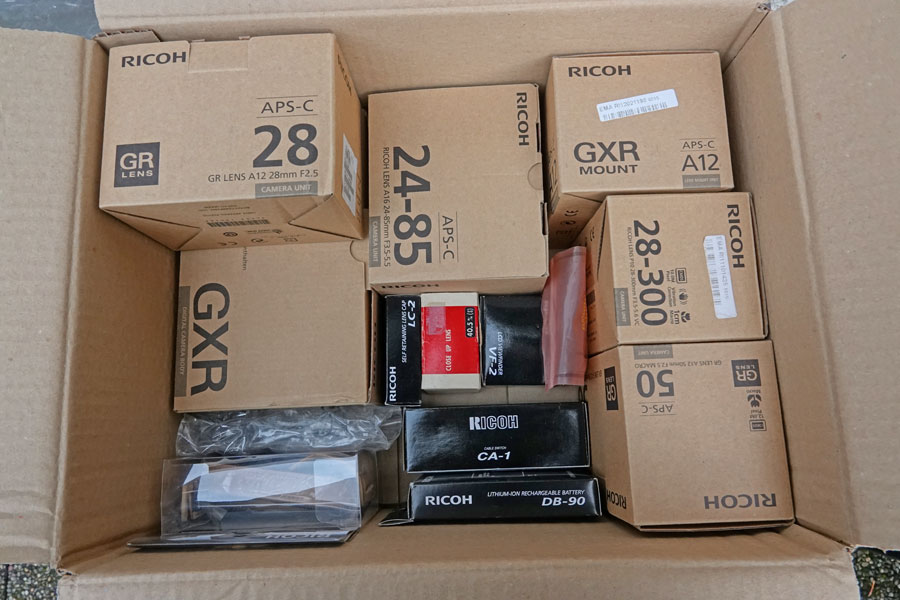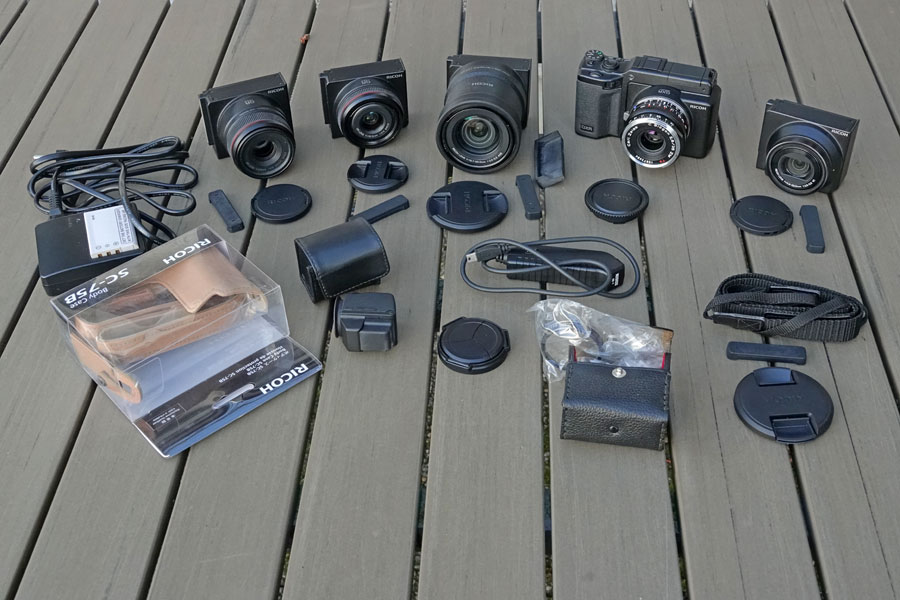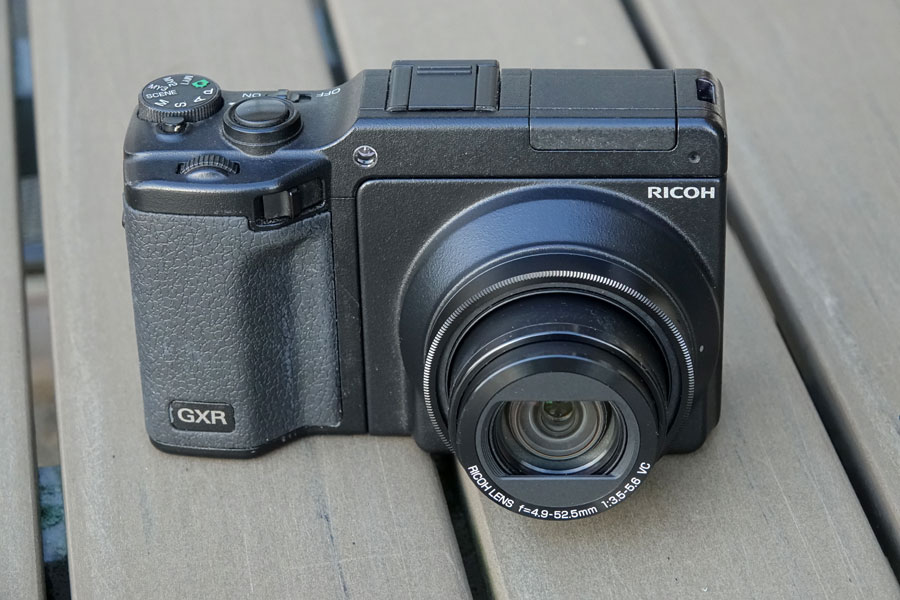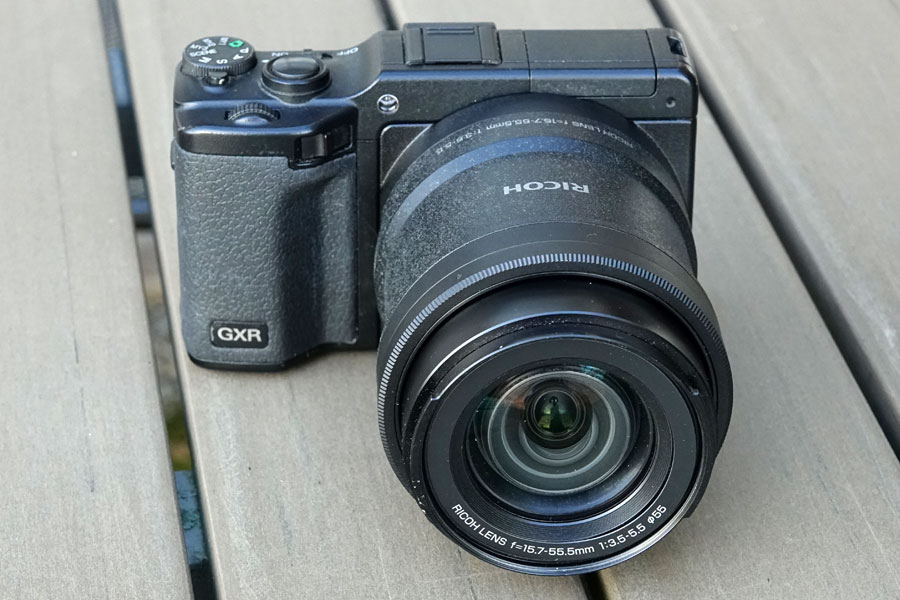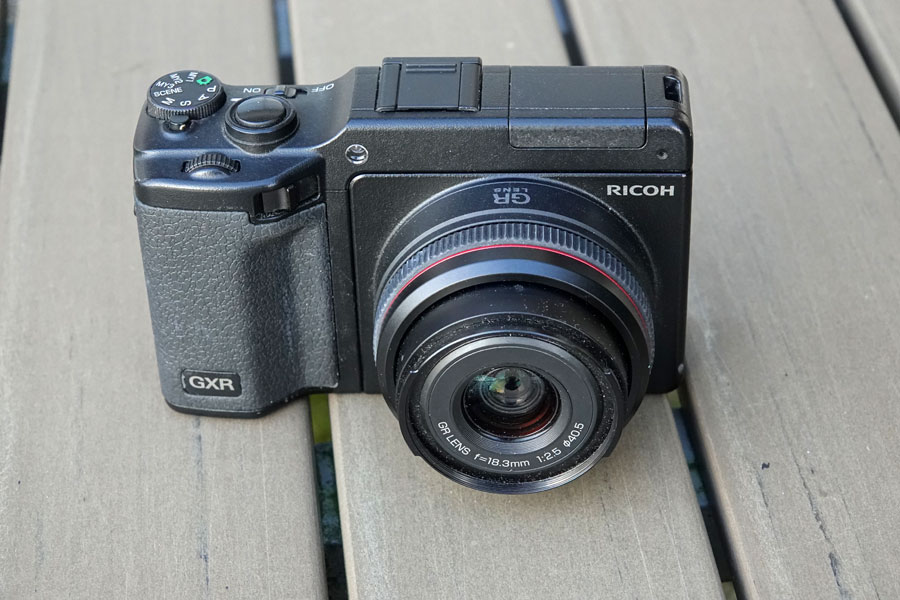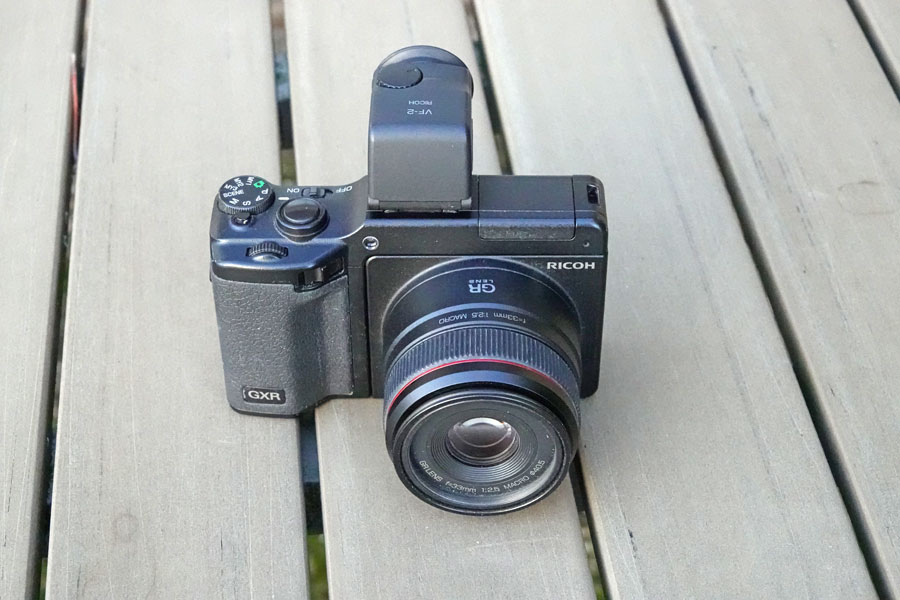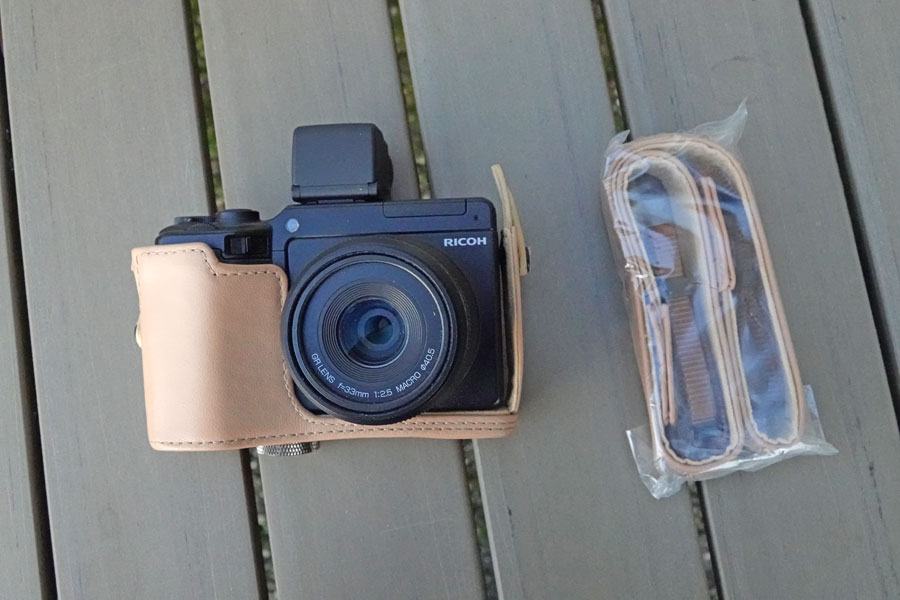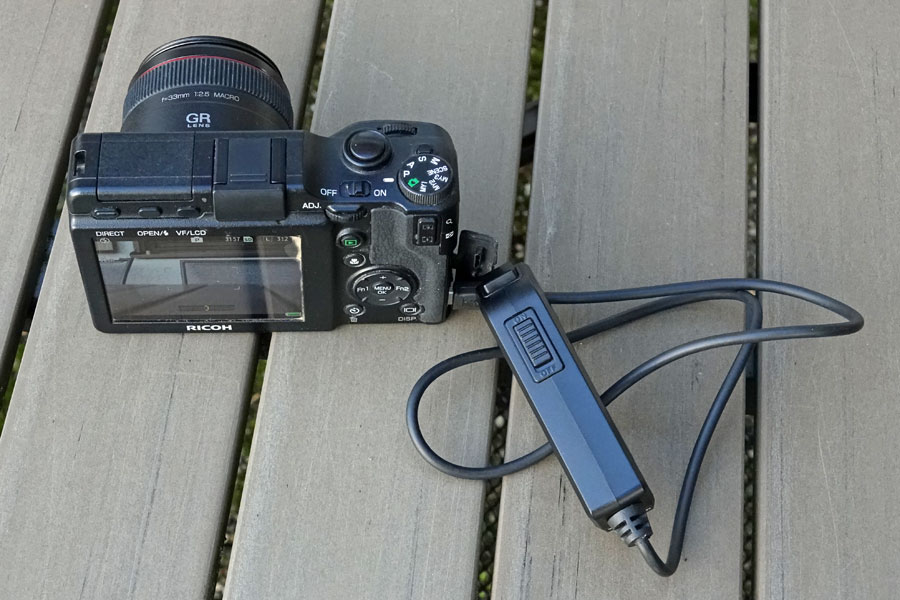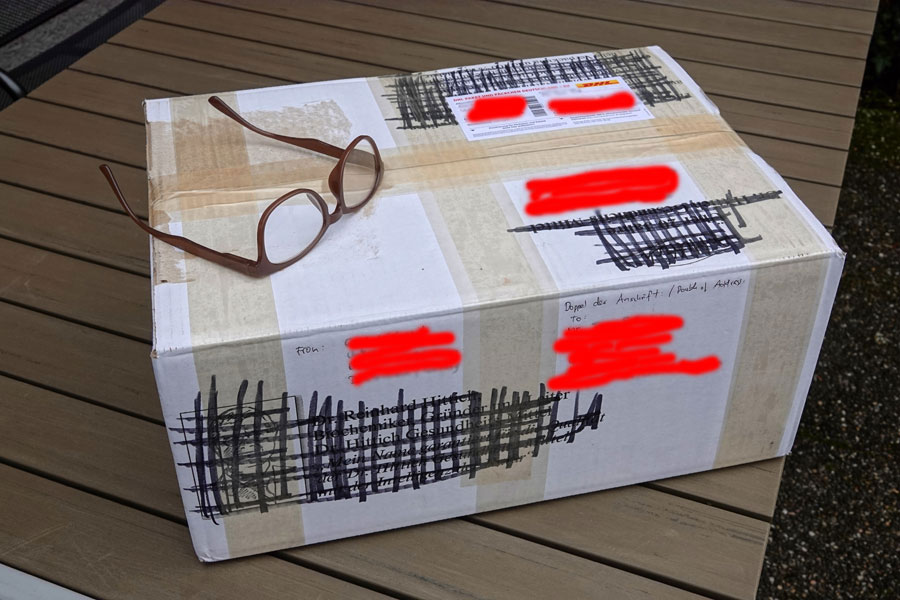Ricoh GXR: Introduction
Purpose of My Ricoh GXR Pages | How I Became A Ricoh GXR Owner | Now I Am A Ricoh GXR Owner... | Now I Was A Ricoh GXR Owner... | Would I Recommend A Ricoh GXR to You?
Archive
Note: It seems that Ricoh let the GXR system slowly and quietly die in 2013/2014. At the beginning of 2016, the body and all camera units except for the S10 unit are labeled as "Discontinued."
| Note: In autumn 2016, I used the GXR for the last time and did so with the A16 unit. That was on vacation because my Leica X Vario had dust on the sensor. In November 2020, I sold my complete GXR equipment (only the S10 camera unit was missing) to a GXR fan in Wales (UK). I therefore can no longer report any experiences with this camera here. |
Purpose of My Ricoh GXR Pages
My Ricoh GXR and pages are intended as an information source for existing and prospective Ricoh GXR owners. However, there is no intention to offer a complete or even up-to-date information source, because I do not have the time for such a project. The focus of my pages is on presenting my personal experiences with these camera systems and thereby providing one or the other useful tip for others.
How I Became A Ricoh GXR Owner
There is a German poem starting: "Ich hab' es getragen sieben Jahr, und ich kann es nicht tragen mehr!" (I carried it for seven years and I cannot bear to carry it any longer). You guess it - it was my DSLR gear. And it were many more years than just seven if I include my analog cameras. I liked the image quality of my DSLRs, I liked the optical viewfinder, but I neither wanted to carry a lot of equipment around, nor did I like to change lenses. Therefore, I was looking for alternatives. But at the beginning, the alternatives were just additional cameras that competed with my DSLRs for being used (many photographers may know this issue well...).
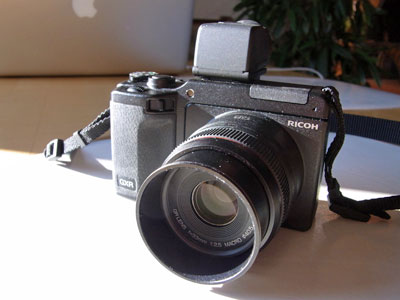
After I had "switched" my wife from Canon IXUS digicams to the Ricoh R series, I started to look into the Ricoh forums and stumbled across the GX100, which attracted my attention because of its 24 mm wide-angle lens. The GX100 photos were indeed nice at wide-angle, often less nice at 72 mm, but it soon emerged that the GX100 started to compete with my Sony A100/700. For the Sonys I had also bought nice lenses starting at 24 mm (the Zeiss 16-80 and the Sony 16-105) and so both types of cameras were somewhat "equivalent" for me. As a result, it showed that it was the GX100, which accompanied us on our holidays in one year, while it was the Sony in another one... The GX100 was replaced by its successor GX200 and accompanied us to Paris in 2008; in 2009, the Sony got the edge again and accompanied us to Sweden. I simply could not make up my mind!
Moreover, my hips were getting worse and worse, so that I had to replace them in 2009 and 2010. This was also a long-standing reason not to carry too much gear around.
Then, there was another interesting observation that I made: Being used to electronic viewfinders since I owned Minolta bridge cameras (the Dimage series), I often forgot to check the exposure on the LCD screen on the back of the camera when shooting with my DSLRs. Often, this resulted in lost photos because exposure "off." The GX100/200, on the other hand, offered an EVF, and I was using it more or less exclusively - with the added benefit of getting an impression of the exposure.
Finally, there was a new camera type appearing at the horizon: The EVIL camera, offering interchangeable lenses and an electronic viewfinder in a smaller package than a DSLR. This concept looked like the future to me - I found and still find the concept of DSLRs obsolete (although I appreciate the advantages of optical viewfinders). The only problem was that I did not like any of the current (= early) offerings on the market (Panasonic, Olympus)...
In October 2009, my Sony A700 was no longer on the market, and it seemed high time for me to sell it if I wanted to achieve a good price for it - there was still a lot of interest in this fine camera. On the other hand, there was no viable alternative in sight - an EVIL camera that came close to what I wanted was not on the horizon. However, there were some rumors about a new camera from Ricoh, most of which proved wrong in the end, though. Anyway, I decided to sell my existing DSLR gear and opt for the new Ricoh. After a while, it emerged that this would be a "module" camera and that one of the camera units would be a kind of GX200 successor. Therefore, I decided to sell my GX200 as well. Thus, for quite a while I did not have any camera at my disposal, because the new Ricoh GXR was scheduled for about Christmas in Germany!
And indeed, my new GXR arrived at the weekend before Christmas, but not without a "shock": In the package of the GXR body the body was missing!!! I was completely shocked! Luckily, the dealer sent another body that arrived the next day(!!!) so that I had a workable camera just before Christmas - Christmas was saved! And since then, I am a - more or less happy - GXR owner...
Now I Am A Ricoh GXR Owner...
One year later in December 2010, I owned already four camera units for the GXR. Two of them are APS-C camera units with fixed focal lengths (28 mm and 50 mm), and two other camera units have a small sensor and are "replicas" of existing Ricoh cameras: The S10 corresponds to the GX100/200 (24-72 mm) and the P10 corresponds to the CX3/4/5/6 (28-300 mm). My experience with the camera units can be read on these pages, and they are not always pleasant. At times, I had even considered selling my GXR equipment and buying a new camera.
The firmware update in autumn 2010, however, reconciled me with the camera. In autumn 2011, I bought the M-mount expansion unit, which I originally had not intended to do, and eight Leica M lenses for it (15 mm, 21 mm, 28 mm, 35 mm, 50 mm, 75 mm, 90 mm, and 135 mm). Actually, this unit opened up a completely new world for me. You should, however, carefully consider, whether you really want to engage with it - it can become very, very costly for you (and also challenging...). I eagerly awaited the 24-85 mm zoom (A16) that replaced my S10 camera unit and quickly became my favorite unit - and that's it for the moment with respect to the GXR, since Ricoh seems to let this system die... And then there was Leica...
In autumn 2016, I used the GXR for the last time and did so with the A16 unit. That was on vacation because my Leica X Vario had dust on the sensor. Since I did not use the camera anymore, these pages were also no longer updated.
Now I Was A Ricoh GXR Owner...
I packed my GXR equipment in a box to sell or trade it in at a camera dealer. When the opportunity arose in March 2019 to "swap" my Sony RX10 M3 for the M4 at a dealer in Ludwigsburg and trade in more cameras, it was too short notice for me, and the whole action would have taken much longer than it already did. In December 2019, I had the opportunity to sell the camera at a dealer in Ulm, because my brother wanted to buy a Sony RX10 M4 and trade in a lot of equipment. But this took so long that I was not able to sell my equipment. The salesman noted the whole affair down - and never contacted me again... In case that the dealer would contact me, I had left the equipment at my brother's home in Ulm. In January 2020, I was back at my brother's place to celebrate his birthday, but forgot to take the camera back home... In May 2020, I was in Ulm again, and this time, fortunately, I took the equipment home with me - in the Corona year 2020, there were not many opportunities for visits... And in November 2020, I received an e-mail from an interested photographer from Wales (UK), to whom I sold all my equipment (only the S10 camera unit was missing). I had always secretly hoped for such an e-mail, but never dared to believe it to come true...
Bye-Bye (1st Attempt)
In mid-December, I took my GXR equipment (only the S10 module was missing) with me to Ulm to give it in payment to a dealer there. Here are some "farewell photos":
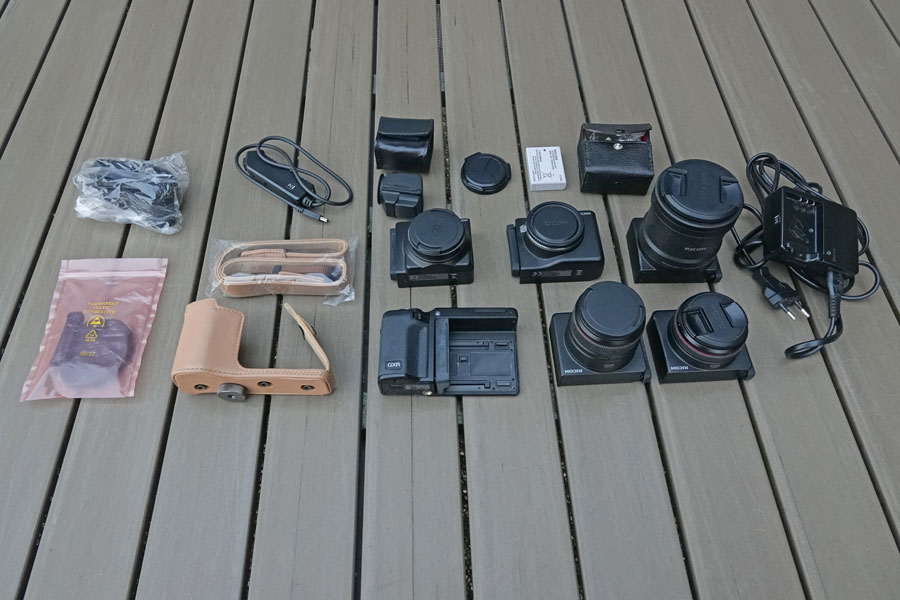 |
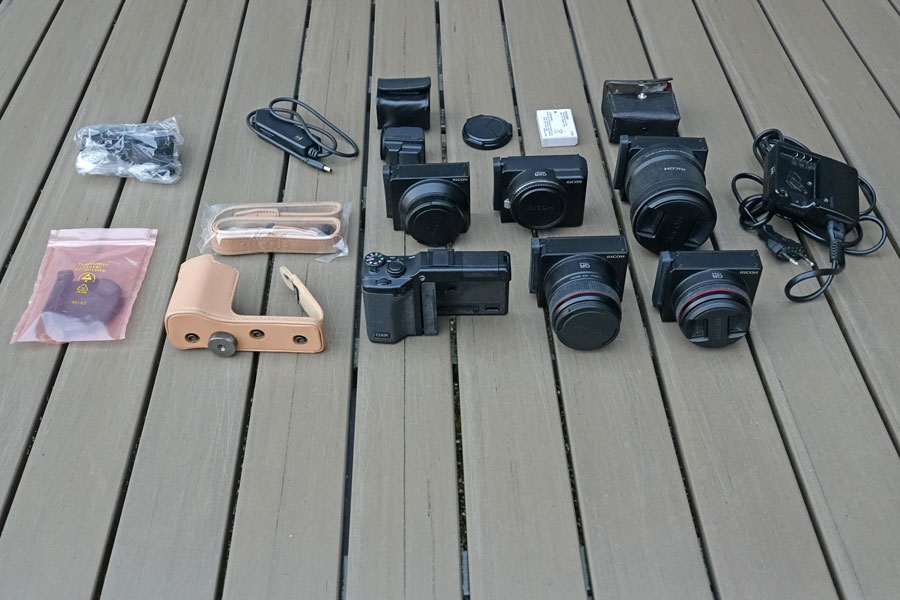 |
|
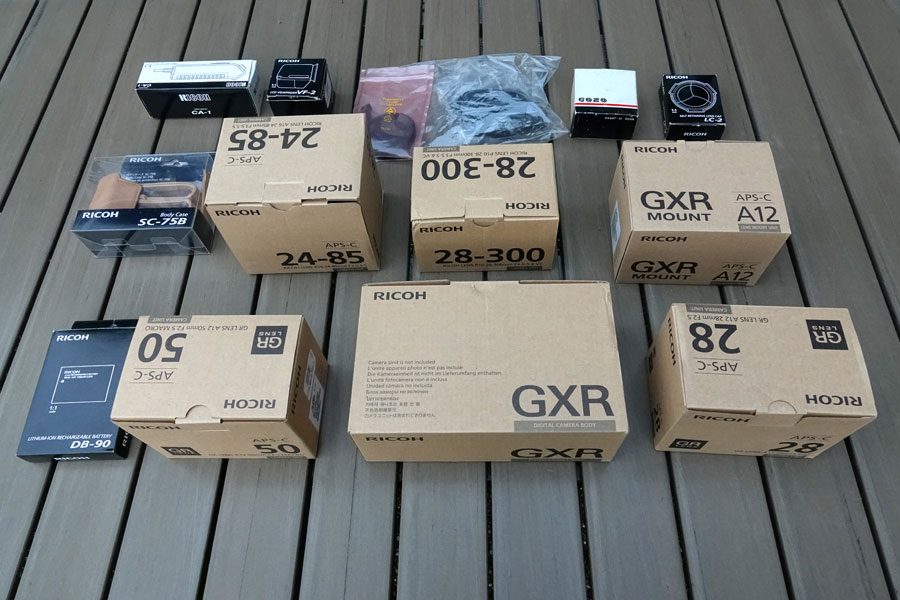 |
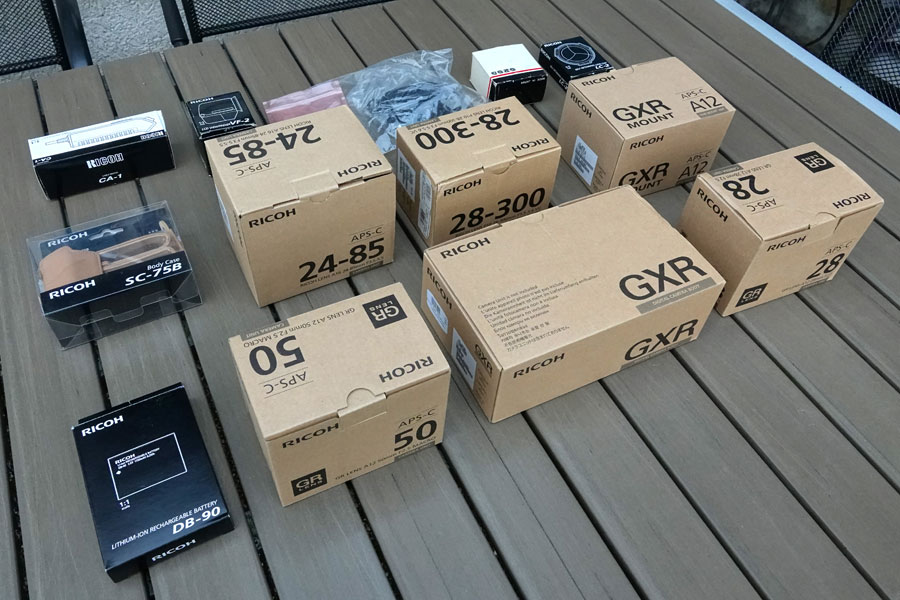 |
In the end, this selling attempt failed for several reasons...
Bye-Bye (2nd Attempt)
In November 2020, I received, as already written, a request for the GXR from Wales (UK). For this purpose I unpacked all my GXR equipment again, checked it, took pictures with the camera units, packed it again, and finally sent it off. In the following, I present some photos of this action!
Would I Recommend A Ricoh GXR to You?
Note: I do not need to recommend it anymore, because the camera has been discontinued and only be bougth in used condition (but no longer from me ...).
Definitely not - as least not as long as I do not know what your photographic and personal preferences regarding digital cameras are. I can only tell you what I like and what I like less or not at all.
For the time being, here is a respective reply that I gave to someone in a forum:
I am still a bit undecided about the GXR, particularly given all the unfavorable reviews and the bulk of money spent. But it was and still is the way I wanted to go and so I have to master it! Thanks to Sean Reid's review, I learned a couple of new things about the camera, particularly that it does not use the widest aperture when you look through the viewfinder like SLRs do (I had already seen that images had less depth of field after the image had been taken, but had no explanation for this phenomenon). And contrary to Sean, I have always been a proponent of EVFs for various reasons (as I already explained in some forum posts...).
Regarding the A12, I am still struggling with the AF, particularly for macro shots (sometimes, the module rejects to focus on a subject that it had focused on on the first try). I also have some strange sharpness issues with the S10 module and sent it to Ricoh for inspection just recently.
Contrary to some people, I am quite happy that the A12-50 is a macro lens, because I shoot a lot of macros.
And also contrary to some people like, for example, Pavel Kudrys (ricohforum), I was waiting for the "CX3" module because I needed a tele lens and bought the P10 camera unit. I have to admit that I used it mostly when it was new... To much competition...
For a moment, I used the new M-mount unit a lot and invested heavily in glass, but this year I mostly use the new A16 zoom - despite some soft corner issues...
All in all, I find it difficult to recommend a camera to other people. As it stands, the GXR fits my needs better than that of many others. I photograph mainly static objects, do macros (therefore my question for close-up lenses, which started this thread), do not "street photography" and generally few shots of people (like of fast moving kids, as Pavel does). And I just found out that the GXR can be used for simple astronomy photography, although it cannot be mounted directly to a telescope.
So, yes, I like the GXR most of the time, but sometimes I hate it (when it does not find focus...), and I use it daily on my short hiking tours to improve my hips. It's spring time, and there are a lot of nice photo opportunities outside!
| 19.11.2020 |
